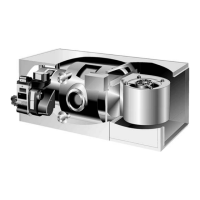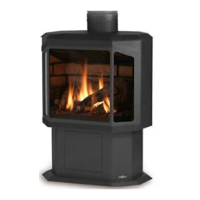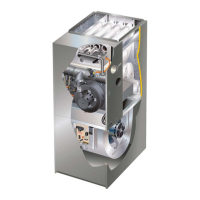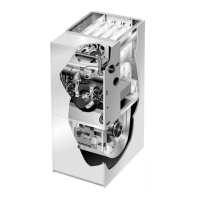Page 18
MASONRY CHIMNEY
BAROMETRIC
CONTROL*
(IN EITHER
LOCATION)
CLEANOUT
CLEANOUT
LINER
MASONRY
CHIMNEY
FIGURE 18
*Barometric control may be installed in either vertical or horizontal
section of vent pipe within 18" (457 mm) of vent outlet of furnace.
12− When two or more appliances vent into a common vent,
the area of the common vent should not be less than the
area of the largest vent or vent connection plus 50% of
the areas of the additional vent or vent connection. Chim
ney must be able to sufficiently vent all appliances oper
ating at the same time.
13− The vent pipe shall not be connected to a chimney vent
serving a solid fuel appliance or any mechanical draft
system.
14− All unused chimney openings should be closed.
15− All vent pipe run through unconditioned areas or outside
shall be constructed of factory built chimney sections.
See figure 19.
16− Where condensation of vent gas is apparent, the vent
should be repaired or replaced. Accumulation of con
densation in the vent is unacceptable.
FACTORY−BUILT CHIMNEY
BAROMETRIC
CONTROL*
(IN EITHER
LOCATION)
FACTORY
BUILT
CHIMNEY
FIGURE 19
*Barometric control may be installed in either vertical or horizontal
section of vent pipe within 18" (457 mm) of vent outlet of furnace.
17− Vent connectors serving this appliance shall not be
connected into any portion of mechanical draft sys
tems operating under positive pressure.
18− Keep the area around the vent terminal free of snow,
ice and debris.
NOTE−If vent pipe needs to exit from side of cabinet, use the
cross hairs (located on either side of the unit) to cut a 6" (152
mm) round hole. Attach finishing plate (provided) with four
sheet metal screws to cover rough edges.
Combustion and Ventilation Air
(Confined and Unconfined Spaces)
Until recently, there was no problem in bringing in suffi
cient amounts of outdoor air for combustion −− infiltration
provided all the air that was needed and then some. In
today’s homes built with energy conservation in mind,
tight construction practices make it necessary to bring in
air from outside for combustion. Consideration must also be
given to the use of exhaust fans, appliance vents, chimneys
and fireplaces because they force additional air that could
be used for combustion out of the house. Unless outside
air is brought into the home for combustion, negative
pressure (pressure outside is greater than inside pres
sure) will build to the point that a down draft can occur in
the furnace vent pipe or chimney. Combustion gases enter
the living space creating a potentially dangerous situa
tion.
The importance of the previous paragraph cannot be
overstated. Users may inadvertently block fresh air in
takes after installation.
In the absence of local codes concerning air for combus
tion and ventilation, the following section outlines guide
lines and recommends procedures for operating oil fur
naces in a manner that ensures efficient and safe
operation. Special consideration must be given to com
bustion air needs as well as requirements for exhaust vents
and oil piping.
Combustion Air Requirements
CAUTION
Insufficient combustion air can cause headaches,
nausea, dizziness or asphyxiation. It will also
cause excess water in the heat exchanger result
ing in rusting and premature heat exchanger fail
ure. It can also cause property damage.
All oil−fired appliances require air to be used for the com
bustion process. If sufficient amounts of combustion air are not
available, the furnace or other appliance will operate in an inef
ficient and unsafe manner. Enough air must be provided to
meet the needs of all fuel−burning appliances, as well as ap
pliances such as exhaust fans which force air out of the home.
When fireplaces, exhaust fans, or clothes dryers are used at
the same time as the furnace, much more air is required
to ensure proper combustion and to prevent a down−
draft situation. Insufficient amounts of air also cause in
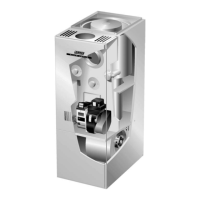
